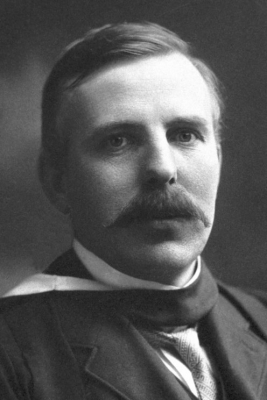
Ernest Rutherford was a New Zealand-born British physicist, who postulated the nuclear structure of the atom, which led to the exploration of nuclear physics. He discovered alpha and beta rays, and proposed the laws of radioactive decay. He is often called the father of nuclear physics”.
Ernest Rutherford was born in 1871, in Nelson, New Zealand. Ernest received a double major in Mathematics and Physical Science from Canterbury College, the University of New Zealand, Wellington in 1893. He was awarded an Exhibition Science Scholarship, enabling him to go to Trinity College, Cambridge, the U.K., as a research student at the Cavendish Laboratory under JJ Thomson, who was an expert on electromagnetic radiation. In 1895, Rutherford developed a simple apparatus to detect electromagnetic waves, or radio waves.
Early breakthrough
Along with Thomson, he studied the effects of X-rays on the conductivity of gases, resulting in a paper about atoms and molecules dividing into ions. The work led to the discovery of the electron by Thomson. Rutherford, meanwhile, went on to study the radioactivity of uranium. In 1898, he left for Canada to become the Macdonald Chair of Physics at McGill University, Montreal, and continued his research there. The same year, he discovered that there are two distinct types of radiation and he named them “alpha” and “beta”. He also described some of their properties. It was later determined that the alpha particle is the same as the nucleus of helium atom consisting of two protons and two neutrons and the beta particle is the same as an electron or positron. He won the Nobel Prize in Chemistry in 1908 for this discovery.
Other scientific contributions
Rutherford discovered that thorium gave off an emanation that was radioactive. Rutherford came up with the concept of radioactive half-life-he found that a sample of a radioactive material of any size invariably took the same amount of time for half the sample to decay. The half-life is unique for each radioelement and thus serves as an identifying tag.
In 1907, Rutherford took the chair of Physics at the University of Manchester. There, he became an “alchemist” of sorts when he successfully converted nitrogen into oxygen by bombarding nitrogen gas with alpha particles.
Throughout his career, Rutherford worked with leading scientists. He was knighted in 1914 and was buried in Westminster Abbey after his death in 1937.
Picture Credit : Google
Leave a Reply